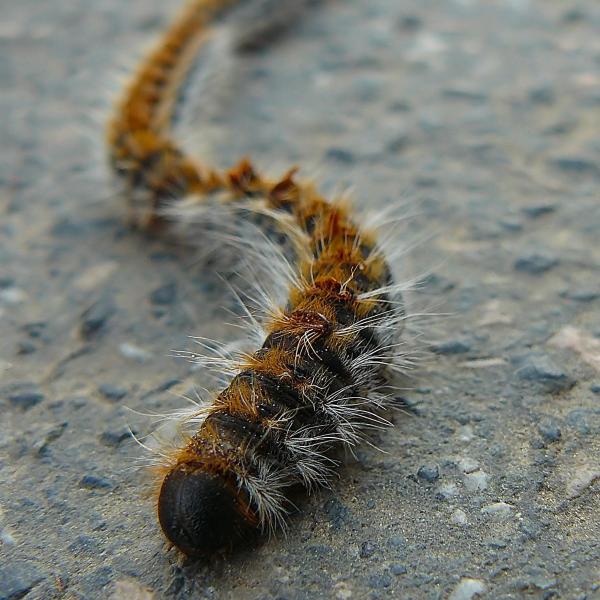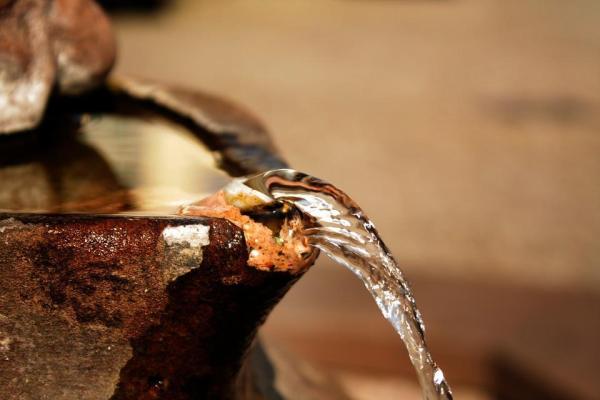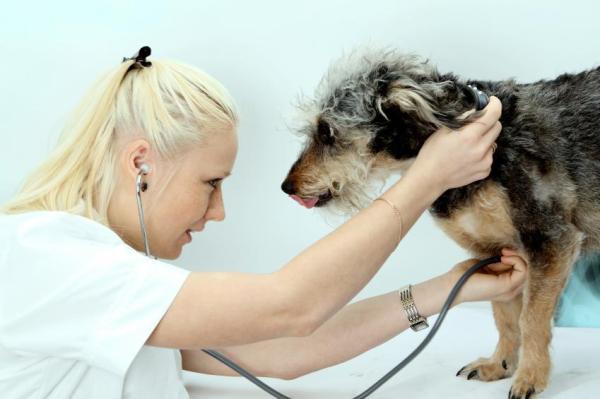
Pine processionary (Thaumetopea pityocampa) is a very particular kind of moth; its life cycle includes, of course, a caterpillar stage, which has a well-known behavior. During the process of metamorphosis, these dangerous insects walk down from the pines where they had nested in columns, creating an actual procession of caterpillars.
This caterpillar is very dangerous for dogs because their fine hairs can cause severe allergies and even necrosis in their tissues if direct contact is made. However, the effects of pine processionary can also be transmitted through the air, so prevention is crucial.
It is very important to avoid contact with this harmful insect. Nevertheless, you should have some idea about what to do in terms of first aid for dogs against processionary caterpillars. Keep reading this AnimalWised article!
Why is the pine processionary dangerous for dogs?
You can easily identify the pine processionary caterpillar thanks to their characteristic aspect and behavior. This species forms a large nest at the top of pine trees, and between late winter and early spring they come down from the tree, forming a procession.
This is when the caterpillar is more dangerous for dogs; when they reach the ground, direct contact is more likely than ever. Dogs, in their relentless curiosity, will approach the file of pine processionary trying to figure out what it is.
The processionary caterpillar can cause different negative effects in your dog, including allergies and discomfort. These can be identified through the following symptoms:
- Swollen and red or bruised tongue
- Blisters
- Salivation
- Vomiting
- Ulcers.
If direct contact occurs, you might be facing a serious situation. You should go to the emergency vet as soon as possible. The stinging hairs of pine processionary are so potent that could they cause necrosis and even the death of your animal. However, it is important to know some first aid treatments in order to decrease the effects of the toxins as much as possible.

1. Remove the caterpillar from your dog's mouth
If your dog has approached or even tried to eat a processionary caterpillar you must take it out of its mouth immediately, although it will probably do that by itself due to itching and discomfort.
However, if you've clearly noticed that your dog has ingested a processionary caterpillar you should make it vomit as soon as possible.

2. Wash the affected area
The second step is to wash the affected area with lukewarm physiological saline solution, as heat reduces the effect of the processionary caterpillar's toxins. However, time is essential so if you do not have the solution at hand you can use fresh, clean water from any source to wash your best friend's tongue.
Do not apply pressure under any circumstances, because it would lead to the the hairs of the caterpillar opening, increasing toxicity.

3. Go to the vet
Treatment after contact between the processionary caterpillar and the dog may vary depending on the severity of the injuries. Treatment will normally involve fast-acting corticosteroids but the most serious cases should also be treated with antihistamines or antibiotics.
Remember that there are human medicines which are not suitable for dogs. That's why you must go to a professional to provide you with suitable suggestions; never medicate your dog yourself.
The speed and effectiveness of your arrival at the specialist will determine the health of your dog, and most importantly it's the determining factor to prevent your dog from dying due to suffocation. The effects of pine processionary in dogs are not something that can be solved at home or through using natural remedies.

This article is purely informative. AnimalWised does not have the authority to prescribe any veterinary treatment or create a diagnosis. We invite you to take your pet to the veterinarian if they are suffering from any condition or pain.
If you want to read similar articles to Pine Processionary - First Aid for Dogs, we recommend you visit our First aid category.